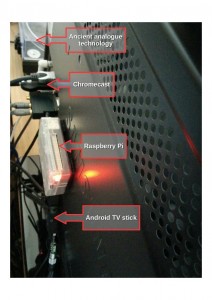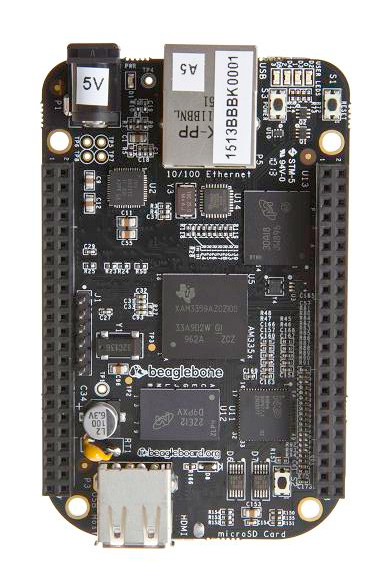 The MK808 Android TV stick with a PCM2704 USB audio interface runs Debian Jessie with MPD and serves as our mediaplayer for audio files. It draws its power from the USB port of our cable modem so it’s always on. Most of the time Indie Pop Rocks is playing. It’s hooked up to the network via WiFi. We use MPDroid to control it.
The MK808 Android TV stick with a PCM2704 USB audio interface runs Debian Jessie with MPD and serves as our mediaplayer for audio files. It draws its power from the USB port of our cable modem so it’s always on. Most of the time Indie Pop Rocks is playing. It’s hooked up to the network via WiFi. We use MPDroid to control it.
The Raspberry Pi runs OpenELEC with Kodi. We use this for watching all kinds of video files that we stream from our NAS (an aging WD My Book Live that runs Debian Lenny) via an NFS share. It is connected to the network via ethernet.
The Chromecast is for watching Netflix. When we just got it we had some issues with connecting it to the network but after replacing our old router with an ASUS RT-AC68U it worked flawlessly.
The Technics SL-1210MK2 with Ortofon headshell and cartridge is for listening music on vinyl, you know those round black plastic units from the past with grooves in them. It doesn’t have any network connections and doesn’t run an OS. It does send electrical current to a NAD C 325BEE Stereo Integrated Amplifier with Dali Concept 2 speakers. Yeah, I’m a 2.0 guy.
The TV is an old pre Smart TV Samsung but as it still works we probably won’t replace it for the time being. It does have CEC so we can control the TV, RPi and Chromecast with a single remote.


